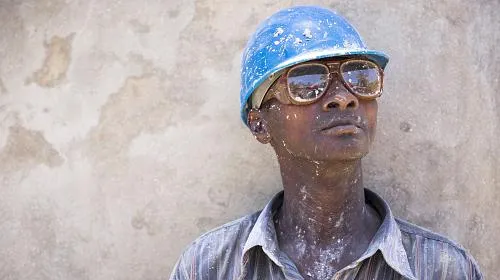PORT-AU-PRINCE – (Jan. 12, 2015) — Five years after a deadly earthquake left an already impoverished nation in complete devastation, the rebuilding effort in Haiti has made significant progress, even as the disaster-prone country continues to face serious challenges. To help build back a more resilient Haiti, CARE continues to partner with local organizations, government agencies and individual Haitians to increase the nation’s emergency preparedness and strengthen the most vulnerable communities.
“With a disaster of this magnitude, it was important to address the immediate emergency needs in a way that laid the foundation for lasting change,” said Jean Michel Vigreux, CARE’s country director in Haiti. “This strategy enabled us to quickly transition from emergency relief to long-term development, which is what we remain focused on today. Programs that started near the onset of the earthquake have evolved over the years to strengthen governance and disaster preparedness in vulnerable neighborhoods, and to improve access to opportunities, especially for women.”
Stimulating economic growth was crucial to the rebuilding process. CARE worked with communities to launch Village Savings and Loans Associations (VSLAs), self-managed groups of roughly 30 people who save and loan each other money. That allows members to start small businesses, save up for home construction or make other investments. Since the program launch in 2011, over 1,200 VSLA groups have formed throughout Haiti. Of the roughly 33,000 VLSA members, 74 percent are women. Together the groups have saved more than $1.2 million.
The VSLA program was one of several initiatives included in CARE’s five-year, $100 million commitment made after the earthquake to help Haitians rebuild their lives and communities. A complete update on CARE’s response over the five years can be found here. During that period CARE has worked with communities to:
- Deliver life-saving food, water, shelter and other vital services to more than 290,000 Haitians;
- Provide 1.1 million cubic meters of chlorinated water to more than half million people;
- Reach over 183,000 people with electronic food vouchers totaling$7.8 million benefitting local economies;
- Provide nearly 40,000 children with school kits and 741 teacher kits to quickly get children back in the classroom;
Despite the tremendous strides, Haiti is still a country wrought with challenges exacerbated by poverty, disease and climate change. Since the earthquake, Haiti has been hit by a cholera outbreak, damaging Hurricanes Tomas and Sandy, Tropical Storm Isaac as well as drought.
CARE continues to respond to these emergencies, while also implementing long-term development programs that build the resilience of the most vulnerable families. Through its neighborhood improvement program, CARE promotes sanitation, disaster risk reduction, safer and adequate construction and improved income options and governance. The objective is to provide needed infrastructure, but more importantly to unite communities to work together on needed improvements, resilience and growth.
“We need to constantly assume that disasters are not exceptional events, but are rather part of the context in which all Haitians live,” Vigreux said. “We remain committed to helping families build their capacities to overcome shocks and strengthen Haitian institutions that can endure long after CARE’s involvement.”
Media Contacts:
Holly Frew, hfrew@care.org, +1.404.979.9389
About CARE:
Founded in 1945, CARE is a leading humanitarian organization fighting global poverty. CARE has more than six decades of experience helping people prepare for disasters, providing lifesaving assistance when a crisis hits, and helping communities recover after the emergency has passed. CARE places special focus on women and children, who are often disproportionately affected by disasters. To learn more, visit www.care.org.

